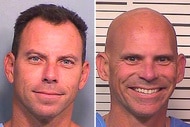Create a free profile to get unlimited access to exclusive videos, breaking news, sweepstakes, and more!
Florida Ex-Youth Pastor On Trial For Dismembering Teen In 1994 Cold Case Slaying
It took authorities 22 years to identify Fred Paul Laster’s mutilated remains, which were dumped in the trash at a Florida gas station in 1994. It took another five to indict Ronnie Hyde for his murder.

A former Florida youth pastor is standing trial this week in a cold case murder of a 16-year-old whose dismembered body was found in a gas station dumpster more than three decades ago.
The long-awaited trial of Ronnie Hyde, who is accused in the gruesome 1994 slaying of teenager Fred Paul Laster, got underway this week. Hyde has pleaded not guilty in the dismemberment killing of Lester, whose remains weren’t officially identified until 2016.
Hyde, 65, who was first arrested in 2017, was formally indicted on first-degree murder charges last February. He’s also charged with 25 counts of child pornography possession.
Detectives found a dismembered human torso behind a dumpster at a BP service station alongside U.S. Interstate 10 in Columbia County on June 5, 1994, according to an arrest report obtained by Oxygen.com. The victim’s head, hands, and legs were never found by investigators.
The body was so badly mutilated that a medical examiner was unable to determine a cause of the then-unknown victim’s cause of death or identity, according to NBC affiliate First Coast News.
A bag containing two bloody kitchen knives, as well as a bloody flannel shirt and a blood-soaked mattress topper, were also found at the scene. A “shiny,” newer model Chevrolet Camaro or Pontiac Firebird was seen parked at the dumpster about an hour before the gas station opened that day, a witness told authorities.
For years, Laster was known locally only as "Lake City John Doe." It wasn’t until 2016 that DNA testing identified Laster, more than 20 years after he was violently murdered.
The 16-year-old’s family told police that his last known contact was with Hyde, who provided conflicting accounts about his last encounter with the boy. The teen was known to frequent Jacksonville Beach, in close proximity to Hyde’s home, charging documents stated.
DNA evidence found on the bloody flannel shirt found near Laster’s body ultimately connected Hyde to the teen’s slaying. In 2016, detectives collected a number of used nasal swabs from Hyde’s trash, which matched the second unknown genetic profile on the piece of flannel clothing.
In the trial’s opening days, presiding jury members viewed a series of shocking and disturbing crime scene images, including a headless torso, a blood-stained mattress topper, and knives.
“The head had been cut off, the hands had been cut off, both legs had been cut off, so it was just the torso of the body,” Brian Retz, a former Columbia County Sheriff’s Office detective and state’s witness recalled on the stand, WJXT reported.
Hyde reportedly stared at the ground as the morbid images were displayed for the court, First Coast News also reported.
Forensic experts also testified to the severity of Laster’s injuries, suggesting at least two blades were used during the brutal murder.
“There were 25 sharp force trauma impacts with a total of 71 cut marks,” forensic anthropologist Heather Walsh-Hayney also said.
Meanwhile, Hyde’s defense team fiercely pushed back on the state’s evidence and grilled its witnesses, including Laster’s twin sister, under oath.
Prosecutors have indicated they wouldn’t seek the death penalty against Hyde.The trial is expected to conclude on Friday, officials said.
A spokesperson for the State Attorney's Office 4th Judicial Circuit of Florida declined to comment further on the case on Thursday when reached by Oxygen.com.
Hyde is being held without bond as trial proceedings wrap up. His private defense attorney, Elizabeth Ann Finnell, didn’t respond to requests for comment when contacted this week.






















